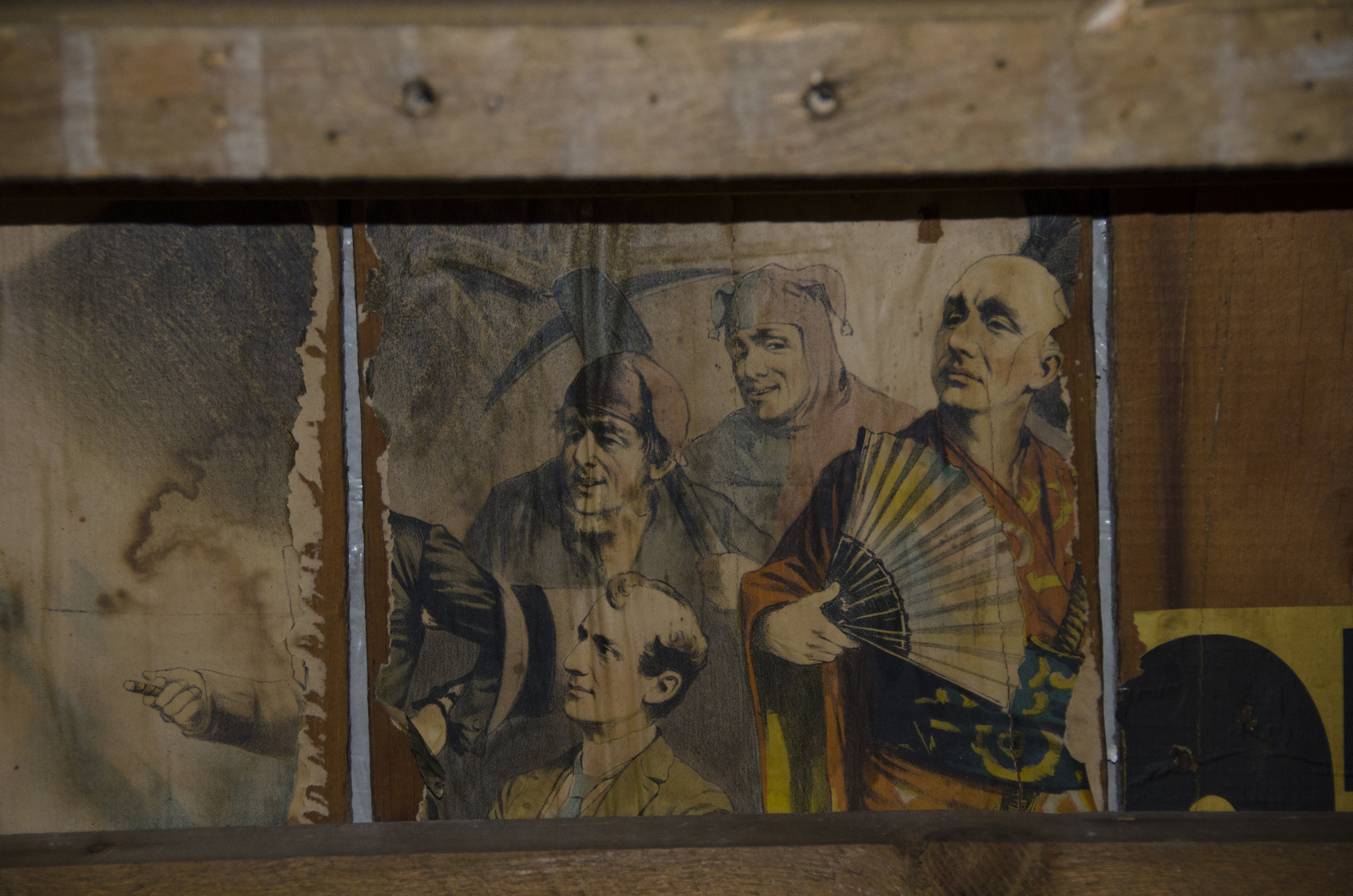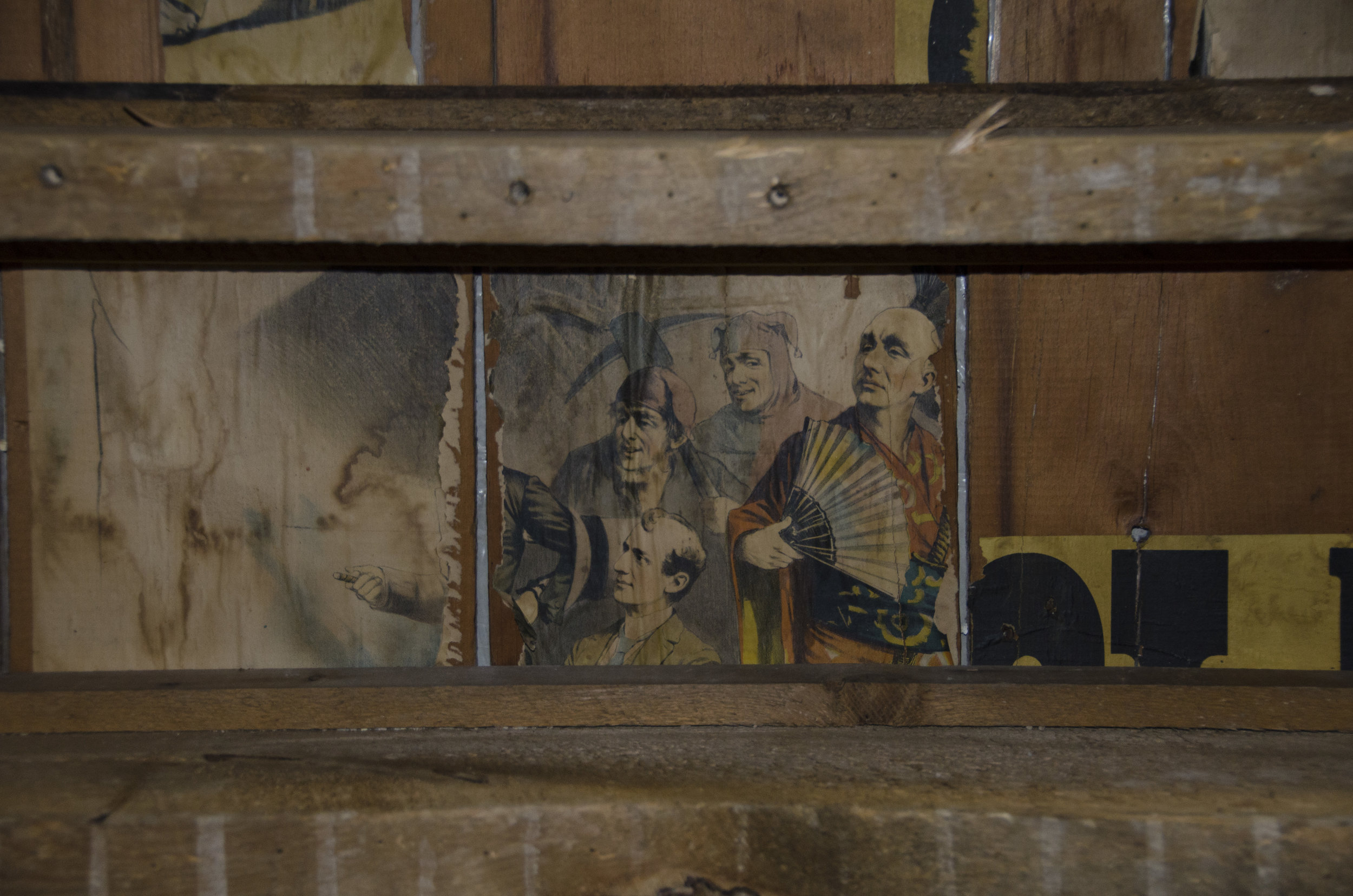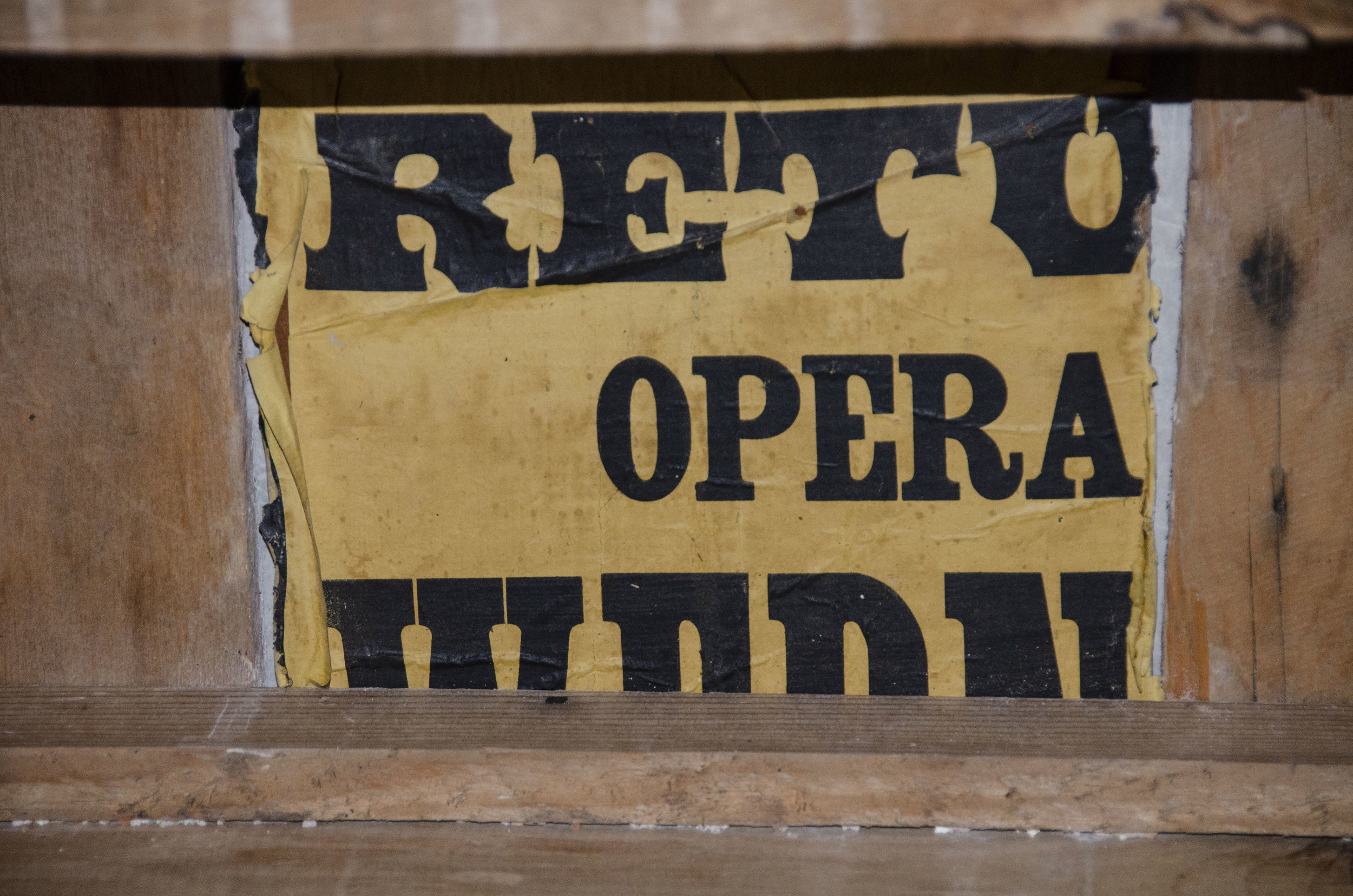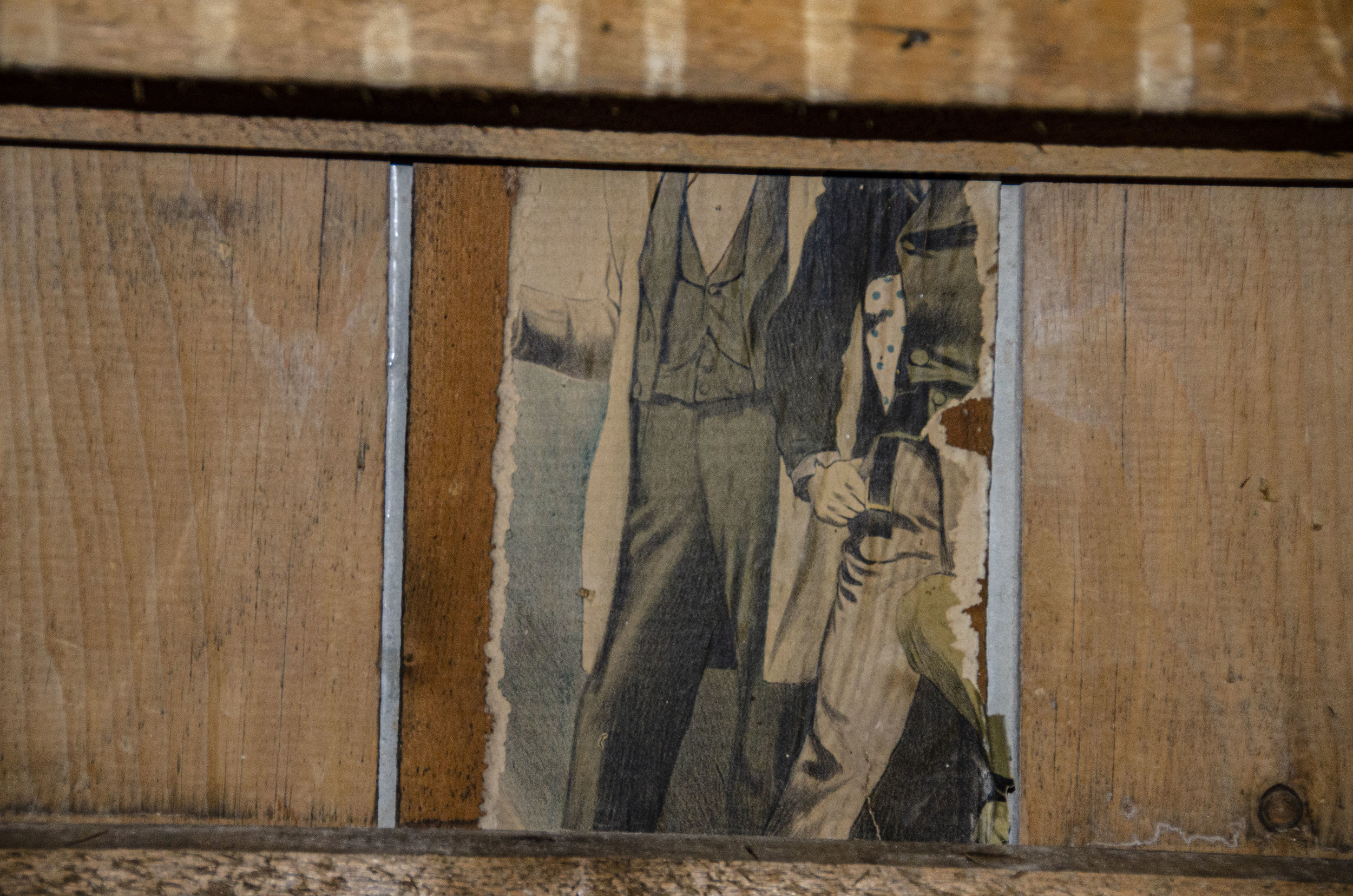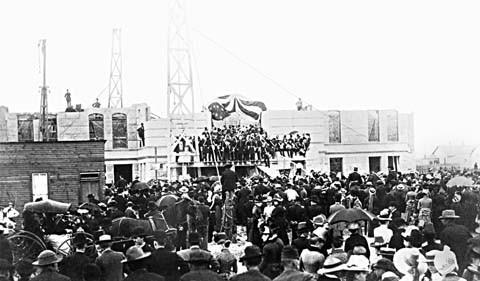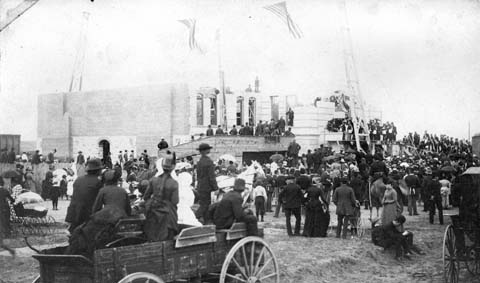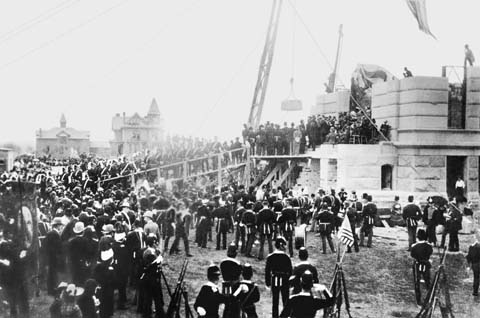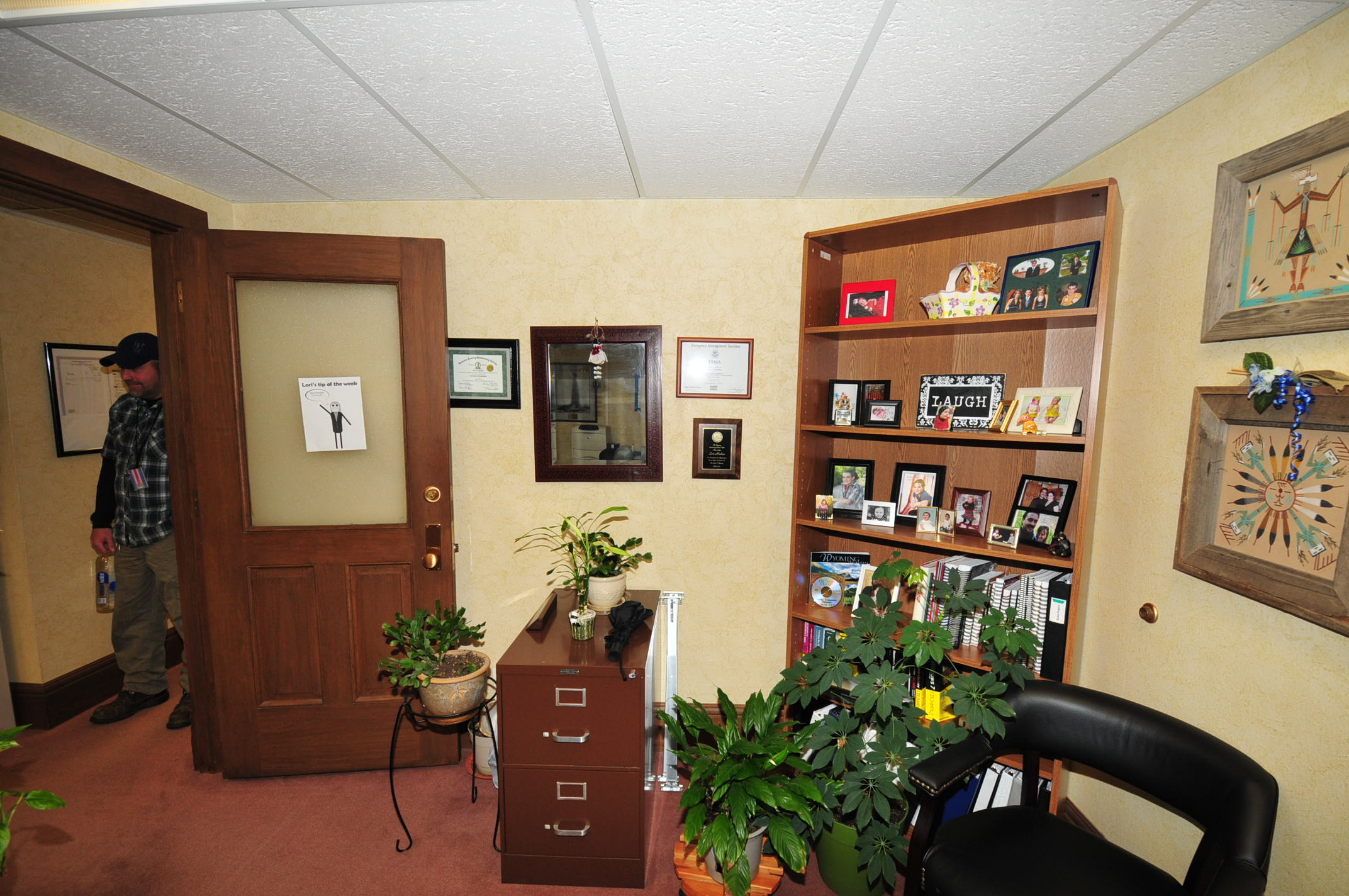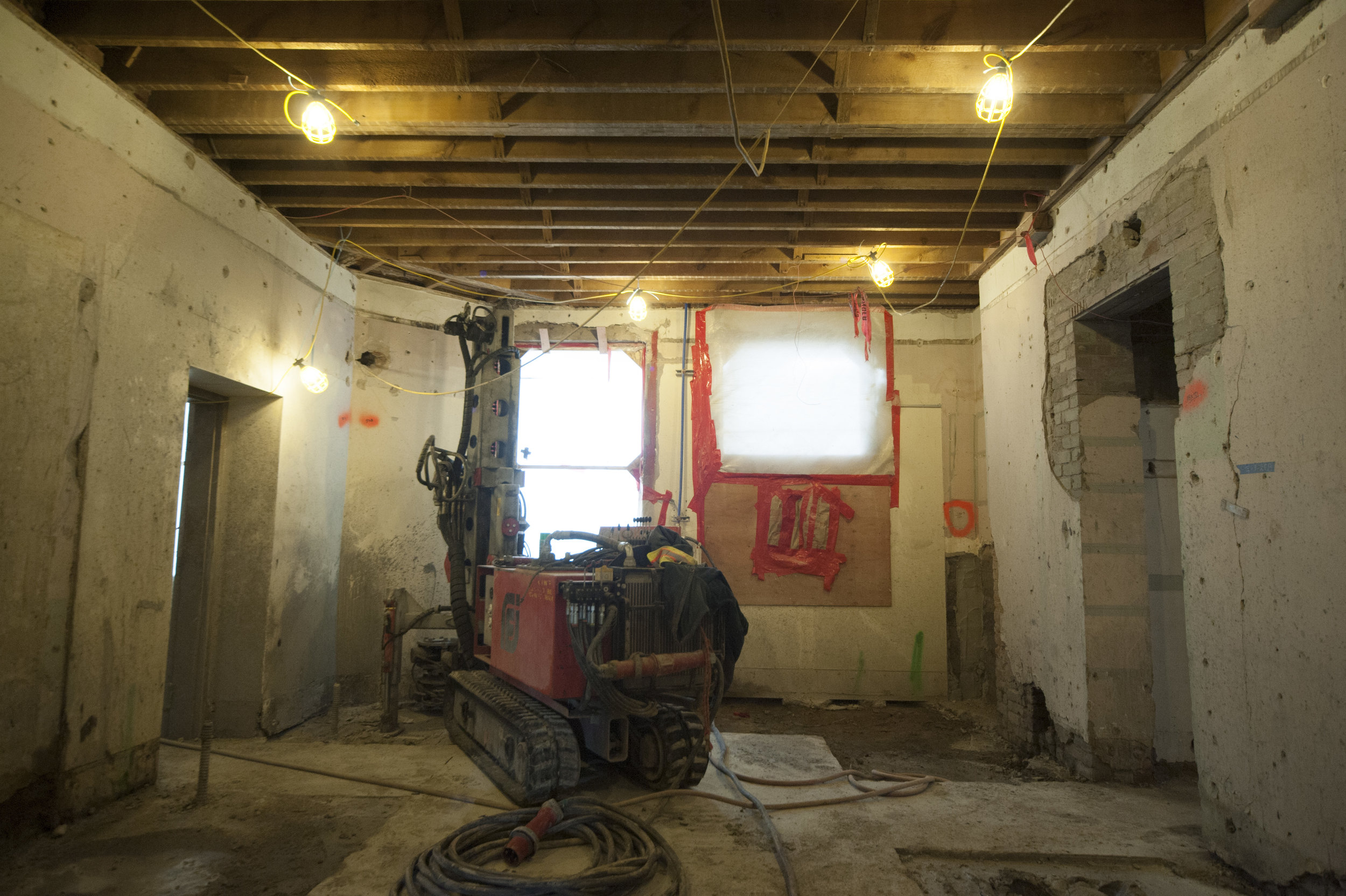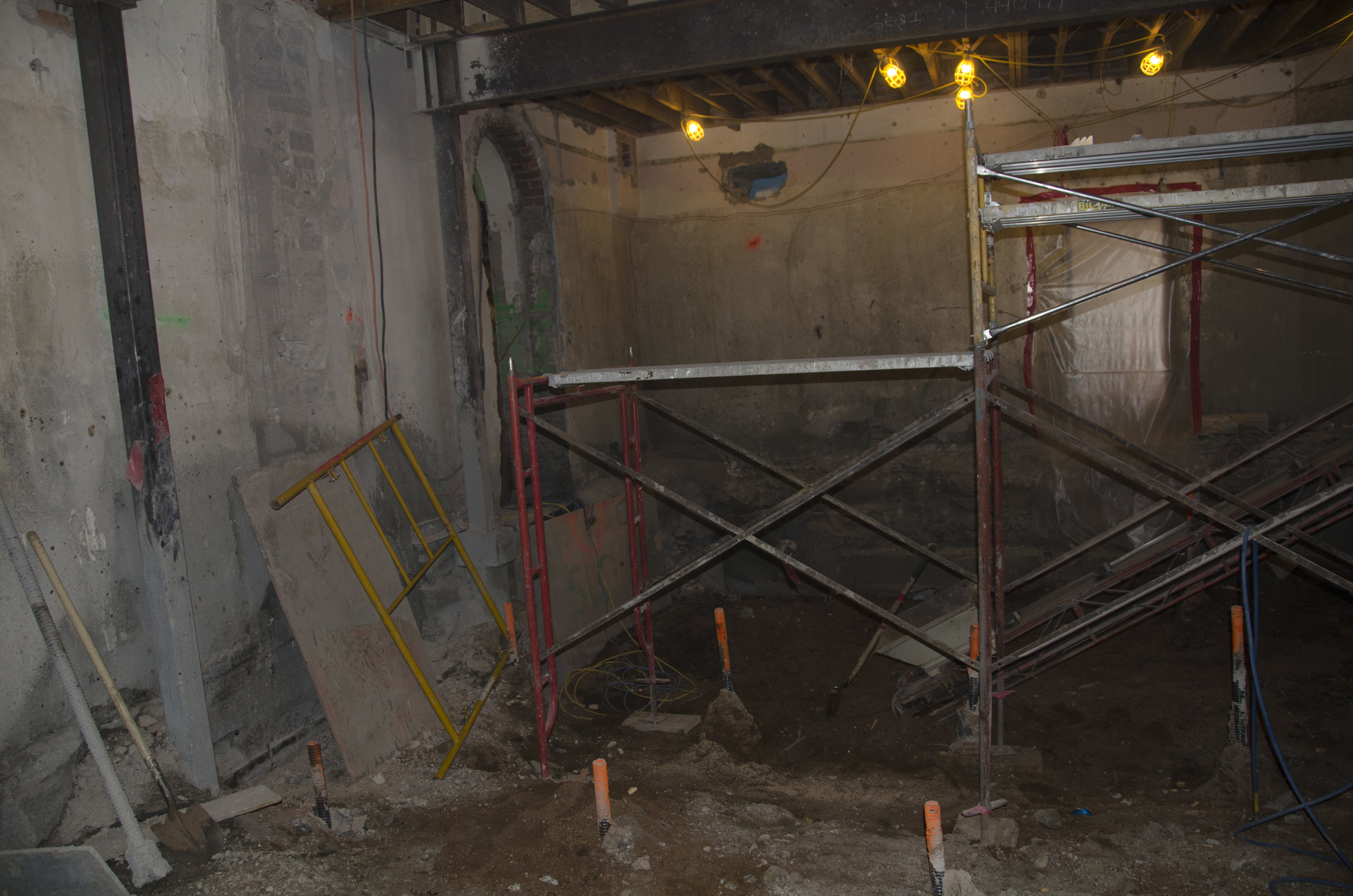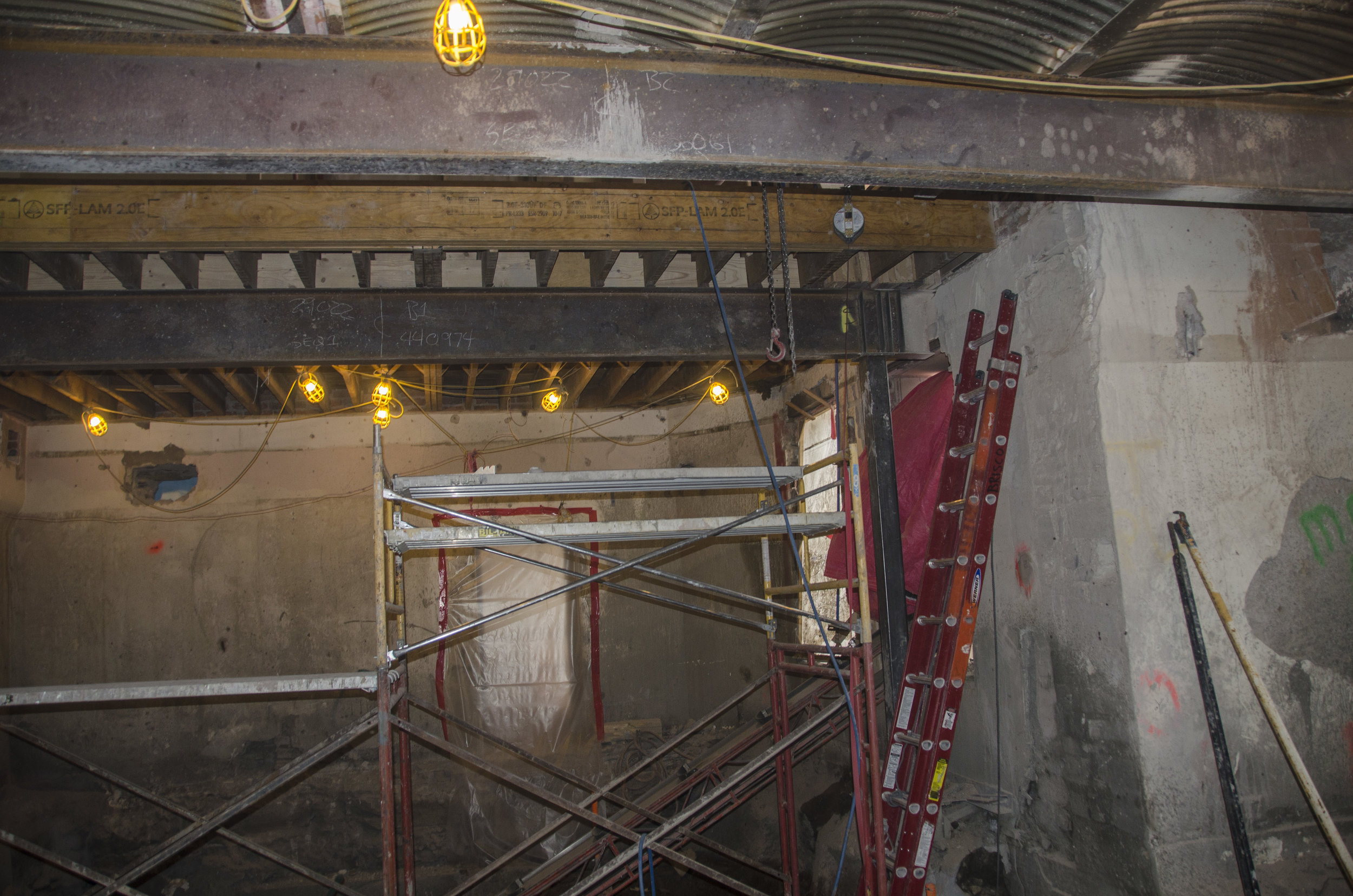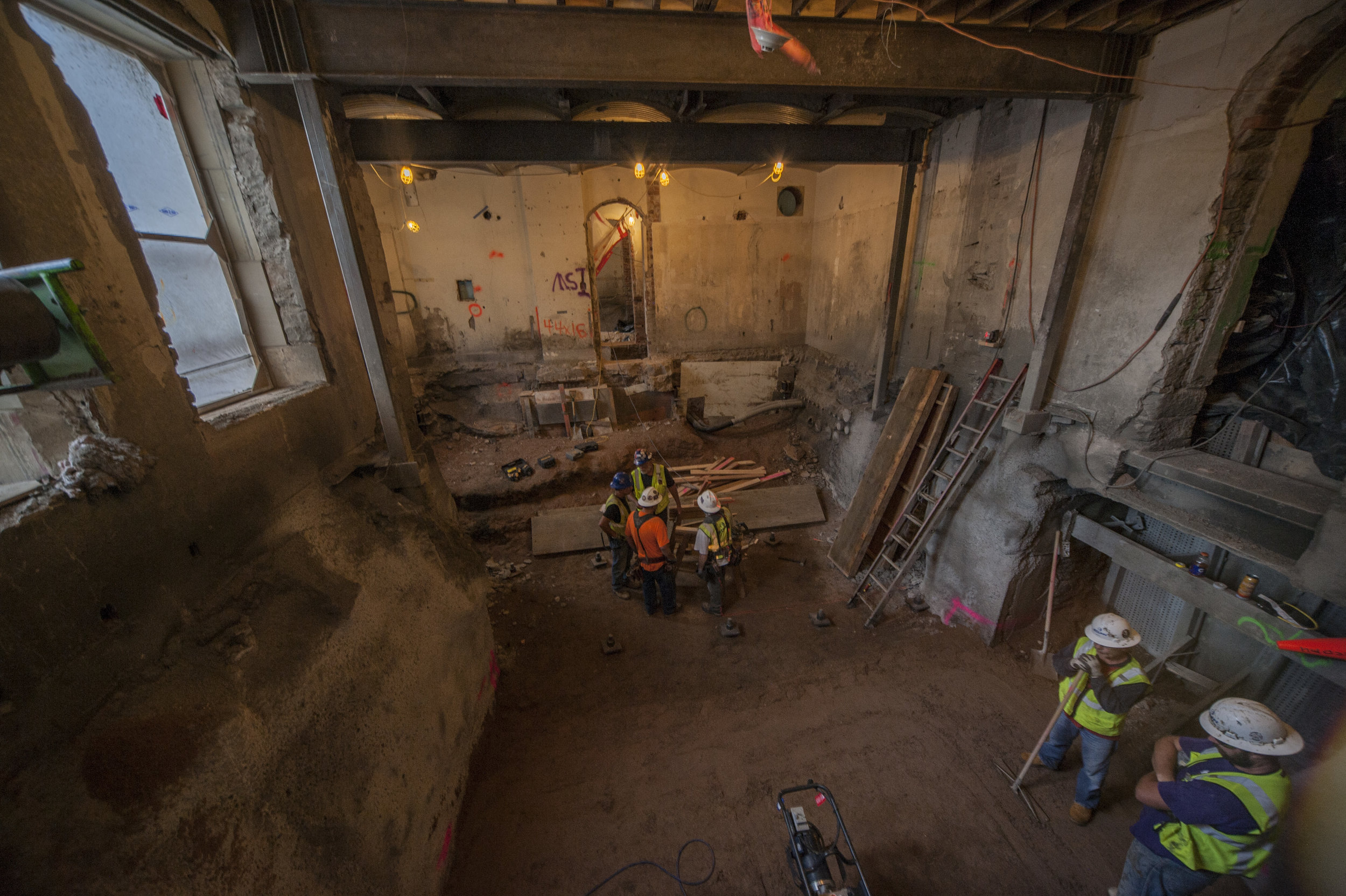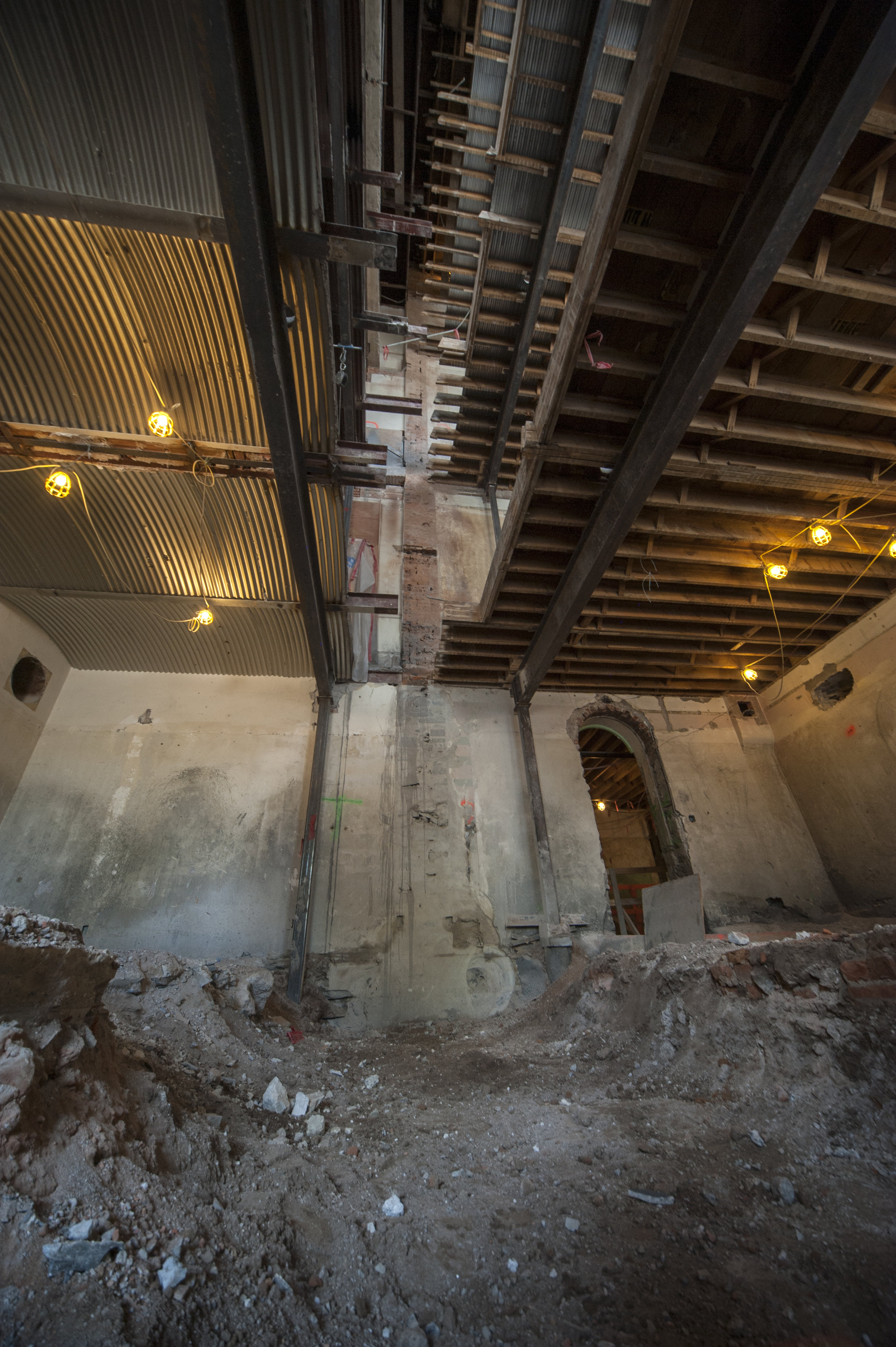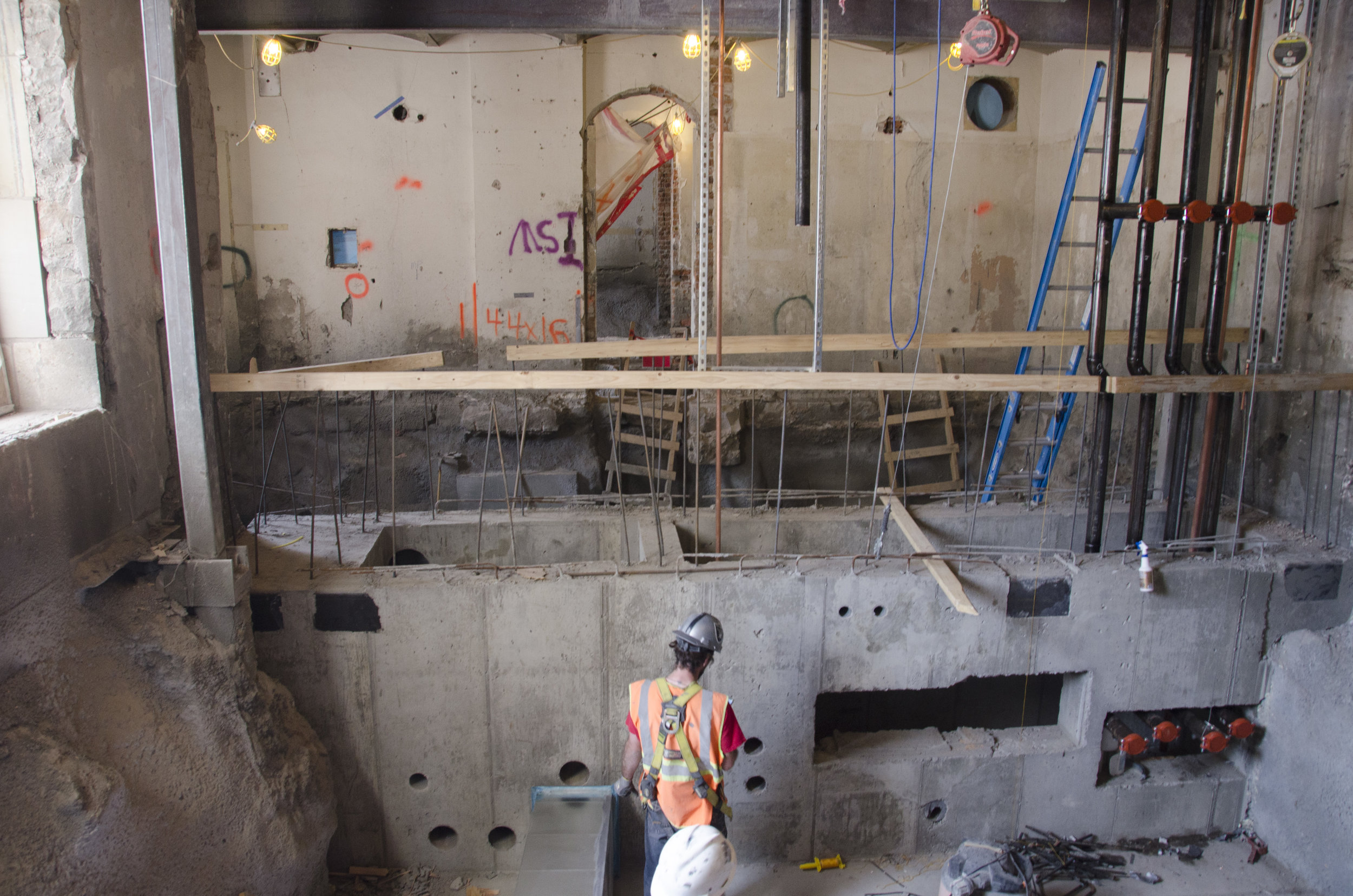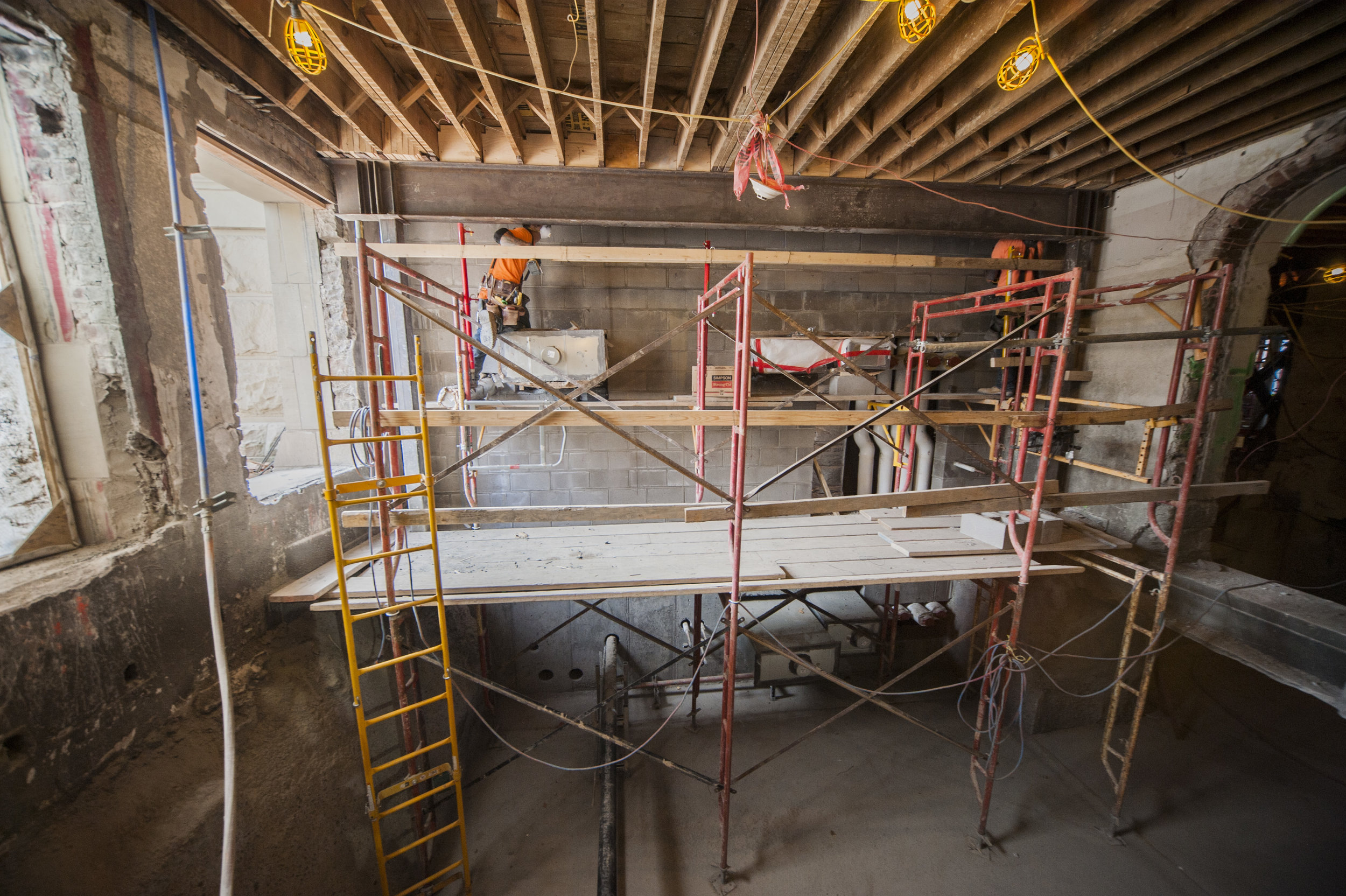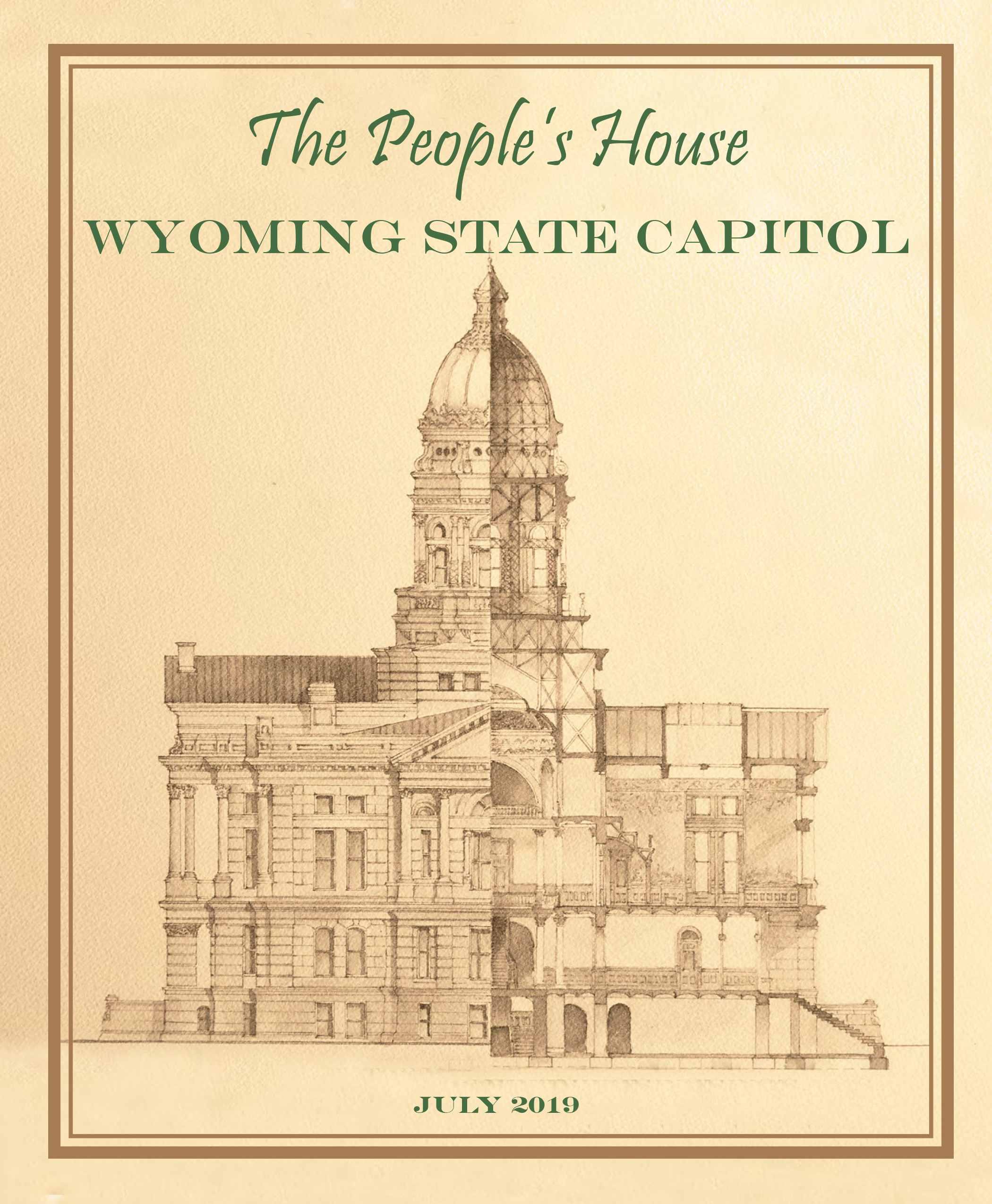Historic Discovery - Opera Posters
/When the suspended ceilings were removed in 2016, pieces of old opera posters were found underneath the old wood subfloor planks, which were above the ceiling in one room on the garden level in the historic 1888 section of the Capitol. We believe that these planks of wood were once used as fencing and posters were glued to them.
In 2016, the garden level was undergoing underpinning to enable the Capitol’s existing foundations to bear heavier loads than originally designed for in the late 1880s and allows for modern utilities to pass under the historic footings. A micropile is constructed by drilling a bore hole, placing reinforcement, and grouting the hole together as one system. A drill rig uses a threaded screw-like rod with an end bit to drill through the soil. Read more about underpinning.
Opera Poster Pieces (click to enlarge photos)
Fragments of the old posters on the ceiling found underneath the old wood subfloor planks in the 1888 section.
Piecing Together History
With a little Photoshop ingenuity, newspaper clips from the Wyoming Newspaper Project, and help from our social media followers, we uncovered more details about the posters.
San Francisco Call, Volume 87, Number 121, 31 March 1901 - Courtesy of the California Digital Newspaper Collection. Click to enlarge.
In May 1887, the Roland Reed company performed new songs, medley piano recitals and give his pocket edition of the Mikado in "Humbug" at the Opera House in Cheyenne. The Humbug, a farce comedy, was performed the same week that cornerstone of the Capitol was laid with the grandest military and civic ceremonies ever witnessed in the territory.
Reed died of stomach cancer in 1901. According to his obituary in the March 31, 1901 San Francisco Call, “Reed was born in Philadelphia in 1852 of a theatrical family. He took children's speaking parts at the Walnut Street Theater and following bis school days Joined the company of Mrs.' John Drew at the Arch-street Theater. Later he was first comedian with numerous companies and became a star in his own company in 1882, playing in "Cheek." Afterward he produced many legitimate comedies, including "Humbug," "The Club Friend," "The Woman Hater," "Lend Me Your Wife," "Innocent as a Lamb," "The Politician," "A Man of Ideas," "Decota," "His Father's Boy," "The Wrong Mr. Wright" and others. Reed was the original Koko In "Mikado" in the United States.”
In May 1887, the Roland Reed company performed new songs, medley piano recitals and gave his pocket edition of the Mikado in "Humbug" at the Opera House in Cheyenne. Opening in 1885 in the nation, the Mikado was a comic opera with music by Arthur Sullivan and libretto by W. S. Gilbert. The opera was set in Japan and satirized British politics and institutions, only disguising them as Japanese.
Roland Reed’s Humbug played two nights before the 1887 Capitol cornerstone ceremony
The May 10, 1887 Cheyenne Daily Sun reported that the following week would be a “lively one.” On Monday evening Roland Reed was scheduled to present “Humbug” at the opera house and on Wednesday the cornerstone of the Capitol building would be” laid with the grandest military and civic ceremonies ever witnessed in the territory.” An ad in the same newspaper highlighted that comedian Roland Reed and his superb company direct from their grand triumph in San Francisco would present Marsden’s farcical comedy Humbug. Mr. Reed planned on introducing to the play new topical songs, piano recitals, and operatic gems.
Click the clippings to enlarge. Courtesy of the Wyoming Newspaper Project.
“In the evening Roland Reed was greeted by a big audience at the opera house where he played “Humbug,” while the Irish Benevolent society scored a remarkable success at their ball given in Keefe hall.”
A photo of the opera house in Cheyenne, around 1890. Photo courtesy of the American Heritage Center's Mark A. Chapman Collection.
According to the City of Cheyenne's historic walking tour brochure, a group of cattle barons and Frances Warren set into motion the construction of the elegant Opera House in 1882 in Cheyenne. People came from miles around to see many famous artists who graced the stage at the opera house such as Lilly Langtree, Sara Bernhardt, William “Buffalo Bill” Cody with his Wild West Show, and major productions from Broadway.
1887 Ceremony for the Capitol Cornerstone
On May 18, 1887, the territory of Wyoming kicked off the cornerstone ceremony with a grand affair, a barbecue, and a parade. At 1 o'clock, nine regiments of Seventeenth Infantry, which composed the garrison from Fort D.A. Russell, including their band, started the procession leading 1,000 plus people through the streets and up to the Capitol steps. Various societies joined the procession.
“Waving banners flashed in the golden light far into the distance, the nodding plumes kept tune to the music of the bands and the rich coloring and sharply contrasted uniforms of the various societies formed a sight that gave inspiration to the dullest intellect. Cheyenne in its twenty years of existence, has never seen anything to compare with it either in extent or gorgeousness. There were about 1,000 men in line and the admirable way in which they were handled gave as much delight as their brilliant and showy uniforms.”
Judge Joseph M. Carey, then delegate in Congress, spoke to a crowd of 5,000 people. "This building is not to be consecrated to some pagan god: it is being erected not to commemorate the services of some dead or living hero, but when completed, it will stand as a monument to the enterprise of a progressive people. It will be dedicated to the uses of those who, we hope, will prove to be wise law givers; to governors who will righteously execute the laws; to judges, whose ermine will remain spotless, whose decisions will ever reflect impartiality and wisdom." - From the May 19, 1887 issue of the Cheyenne Daily Sun, courtesy of the Wyoming Newspaper Project.
Photos show a gangway led to the first floor of the Capitol building. To the left, the sweep of stairs led to the main entrance where the large cornerstone hung suspended by a derrick. It was a block of Rawlins stone three feet and a half inches in length, three feet three-quarters of an inch in width and two feet in thickness. Photo courtesy of the Wyoming State Archives.
At the conclusion of the ceremonies, the attendees drifted to the temporary tables set up just west of the Capitol. The tables were for the immense amount of roast beef, pork and mutton barbecue for the event and served with bread, pickles, and lemonade.
Photos courtesy of Wyoming State Archives. Please click to enlarge.
Becoming Part of the New Infrastructure Core
The room where the opera posters were discovered has become a mechanical room, which is closed to the public. Below is the progression of the room through the length of the project. The posters are still on the ceiling.
After decades of modifications and changes, a series of outdated pipe, wire, and ductwork ran above suspended ceiling tiles throughout the Capitol and many of the mechanical, electrical, and plumbing systems were failing.bAs part of the rehabilitation of the Capitol, new systems have been organized in four vertical chases from the garden level through the attic, removing the outdated piping and ductwork above the ceiling tiles. The new systems are efficiently organized in vertical chases, which will be easier to maintain over time. New mechanical rooms have been located adjacent to the vertical chases on the garden level of the building to most effectively manage these building systems. These cores are located on every floor of the building and also include public restrooms and new elevators. There are now six public women’s restrooms and six public men’s restrooms located in the building core.
Click on the photos to enlarge.











